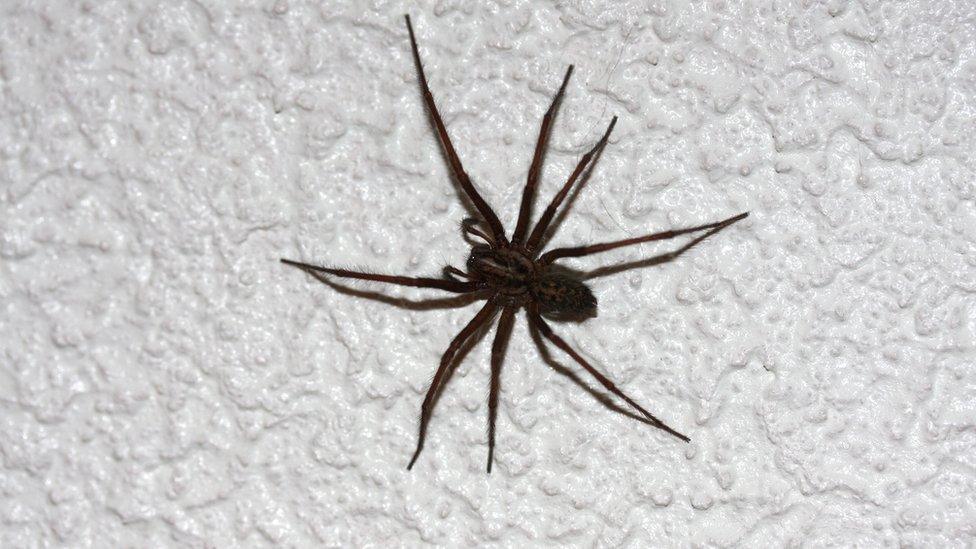'The Rock': The Australian spider helping to save lives
- Published
- comments

Meet the spider called Dwayne 'The Rock' Johnson, after the famous actor and ex-wrestler
This might just look like one pretty huge spider, but there's more to this eight-legged creature than meets the eye.
The funnel-web spider, found in Australia, is so big it's been named after the muscular movie star and former wrestler Dwayne 'The Rock' Johnson.
It's also been helping to save human lives!

Dwayne Johnson is famous for playing Maui in the Disney film Moana
How has 'Dwayne' helped people?
'Dwayne' (the spider!) has been a real help because of the amount of venom scientists have been able to take from it.
Venom can be taken from a spider and sent to a vaccine company to be made into anti-venom - this is then used to help protect people or animals in the future.
Anti-venom can be given to someone who's been bitten by a poisonous spider to stop them getting really ill.
But taking venom from a spider is hard work and it often has to be done many times to extract enough for one dose.
This is why scientists are so excited about having found such a big spider!
Liz Gabriel, director of the Australian Reptile Park, said: "He is unusually large and more spiders like him will only result in more lives being saved due to the huge amount of venom they can produce."
There are at least 40 species of funnel-web spiders.
Not all species are dangerous, but some are aggressive and have highly toxic venom.
The male of Atrax robustus, the Sydney Funnel-web Spider, is one of the most dangerous and is probably responsible for most medically serious bites.
No-one has died from a funnel-web bite since anti-venom began to be used in 1981.
So, why is 'Dwayne' the spider so big?

The recent weather conditions in Australia - rain followed by intense heat - have provided the perfect conditions for funnel-web spiders to thrive.
Because there were so many around, the Australian Reptile Park sent out an urgent warning asking everyone to learn the correct first aid for a bite and encouraged adults to safely catch the spiders for their anti-venom programme.
This particular spider was found by a member of the public in Newcastle in New South Wales who dropped it off at the park.
- Published16 September 2019

- Published20 September 2018

